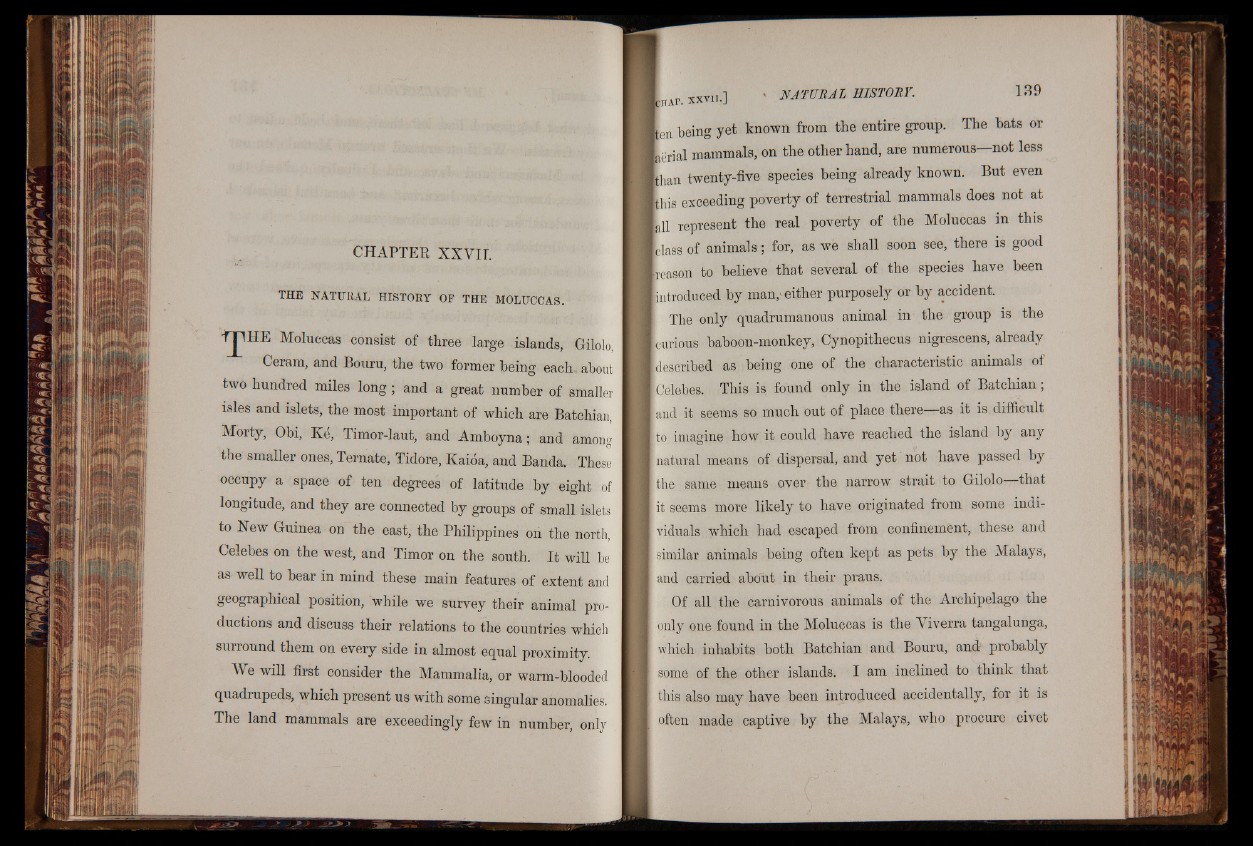
CHAPTER XXVIT.
THE NATURAL HISTORY OF THE MOLUCCAS.
fTIHE Moluccas consist of three large islands, Gilolo,
Ceram, and Bouru, the two former being each, about
two hundred miles long ; and a great number of smaller
isles and islets, the most important of which are Batchian,
Morty, Obi, Ké, Timor-laut, and Amboyna; and among
the smaller ones, Ternate, Tidore, Kaioa, and Banda. These
occupy a space of ten degrees of latitude by eight r of
longitude, and they are connected by groups of small islets
to Hew Guinea on the east, the Philippines on the north,
Celebes on the west, and Timor on the south. It will be
as well to bear in mind these main features of extent and
geographical position, while we survey their animal productions
and discuss their relations to the countries which
surround them on every side in almost equal proximity.
We will first consider the Mammalia, or warm-blooded
quadrupeds, which present us with some singular anomalies.
The land mammals are exceedingly few in number only
ten being yet known from the entire group. The bats or
lerial mammals, on the other hand, are numerous—not less
than twenty-five species being already known. But even
[his exceeding poverty of terrestrial mammals does not at
111 represent the real poverty of the Moluccas in this
[lass of animals; for, as we shall soon see, there is good
[reason to believe that several, of the species have been
introduced by man,'either purposely or by accident.
The only quadrumanous animal in the group is the
icurious baboon-monkey, Cynopithecus nigrescens, already
described as being one of the characteristic animals of
Celebes. This is found only in the island of Batchian;
and it seems so much out of place there—as it is. difficult
to imagine how it could have reached the island by any
natural means of dispersal, and yet not have passed by
the same means over the narrow strait to Gilolo that
it seems more likely to have originated from some individuals
which had escaped from confinement, these and
similar animals being often kept as pets by the Malays,
and carried about in their praus.
Of all the carnivorous animals of the Archipelago the
only one found in the Moluccas is the Viverra tangalunga,
which inhabits both Batchian and Bouru, and probably
some of the other islands. I am inclined to think that
this also may have been introduced accidentally, for it is
often made captive by the Malays, who procure civet